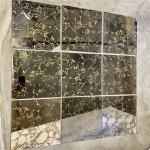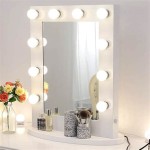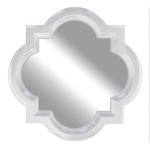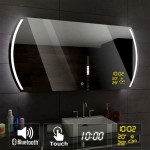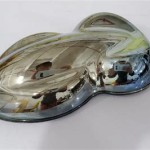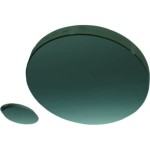How One-Way Mirrors Work
One-way mirrors, also known as two-way mirrors or observation mirrors, create the illusion of one-way visibility. This phenomenon is achieved not through complex materials, but through careful manipulation of light and reflective surfaces. Understanding their functionality requires examining the principles of light reflection and transmission.
A standard mirror consists of a sheet of glass coated with a highly reflective material, typically silver or aluminum. This coating reflects almost all incident light, creating a clear image of the objects in front of it. In contrast, a one-way mirror uses a partially reflective coating, often referred to as a half-silvered or semi-transparent mirror. This thin metallic layer allows some light to pass through while reflecting the remainder.
The key to the one-way mirror effect lies in the difference in lighting levels between the two spaces it separates. The observation side, typically used for surveillance or research, is kept dimly lit, while the other side, the subject side, is brightly illuminated. This lighting disparity is crucial for creating the illusion of one-way visibility.
When light from the bright subject side encounters the mirror, a portion of it passes through the semi-reflective coating, illuminating the observation area. Simultaneously, another portion of the light is reflected back towards the subject side, acting like a regular mirror. Because the observation room is dark, the light transmitted from the subject side is the dominant light source, allowing observers to see through the mirror.
Conversely, individuals on the brightly lit subject side see primarily their reflection. The small amount of light transmitted from the dark observation room is insignificant compared to the bright light within their own environment. This effectively overwhelms the faint image from the observation room, making the mirror appear as a standard reflective surface to those on the subject side.
The effectiveness of the one-way mirror is directly related to the lighting ratio between the two rooms. A greater difference in illumination enhances the one-way effect. If the lighting levels become similar on both sides, the mirror will appear semi-transparent from both directions, allowing visibility in both ways.
The percentage of light transmitted and reflected can vary depending on the specific type of one-way mirror. Some coatings are designed to reflect a higher percentage of light, while others prioritize transmission. The choice of coating depends on the specific application and desired level of concealment.
Common applications for one-way mirrors include security and surveillance in settings like police interrogation rooms, retail stores, and casinos. They are also used in psychological research for observation studies and in certain entertainment applications, such as stage illusions and hidden camera television programs.
The reflective coating on a one-way mirror is typically applied through a process called vacuum deposition. This involves vaporizing the metallic coating material in a vacuum chamber, allowing it to condense onto the glass surface in a thin, uniform layer. This method ensures a precise and consistent coating, maximizing the effectiveness of the mirror.
While often portrayed in fiction as completely invisible from the subject side, a careful observer can sometimes detect a one-way mirror. Looking closely at the surface, especially from oblique angles, might reveal faint reflections from the observation room. Any subtle differences in reflectivity compared to a standard mirror can also be a clue.
Another method for detecting a one-way mirror involves placing one's fingertip against the glass surface. If a gap appears between the fingertip's reflection and the actual fingertip, it suggests a second layer of glass and thus, a potential one-way mirror. This occurs because the reflective surface is slightly separated from the front surface of the glass.
One-way mirrors are a practical application of the principles of light reflection and transmission. Their effectiveness relies on maintaining a significant difference in lighting levels between two adjacent spaces, enabling observation without detection. While seemingly complex, their operation is rooted in fundamental physics, demonstrating the ingenious ways light can be manipulated.
The construction and application of one-way mirrors continue to evolve with advancements in materials and coating technologies. These developments aim to improve the reflectivity and transmission properties, further enhancing the effectiveness and versatility of this fascinating optical tool.

How Does One Way Mirror Work

Buyer S Guide Selecting The Best Mirror For Your Observation Room Two Way Mirrors
Can You Shine Light Through A One Way Mirror Quora

One Way Mirror Smart Glass For Interior Design Chiefway
Is There Such A One Way Mirror

Easy Ways To Make A One Sided Mirror With Pictures Wikihow

The Science Behind A One Way Mirror Primary School Tuition Smart Student

One Way Mirror Window Dark Purlfrost

One Way Mirrors L Science Tuition In Singapore

One Way Mirrors In Healthcare Simulation Helpful Or Hurtful Healthysimulation Com

